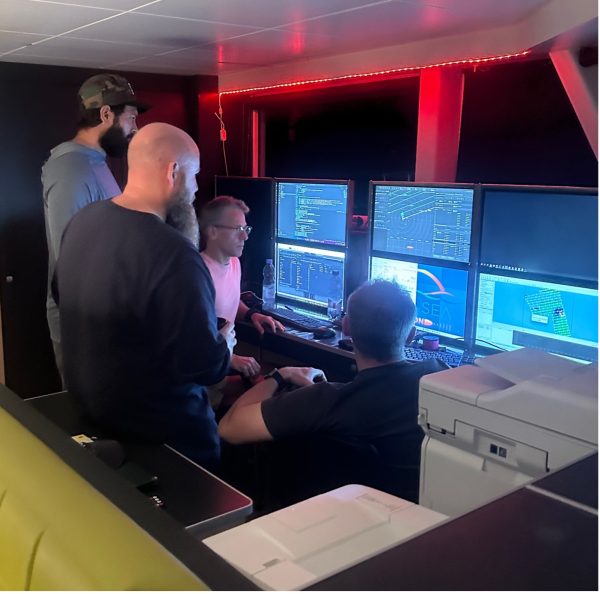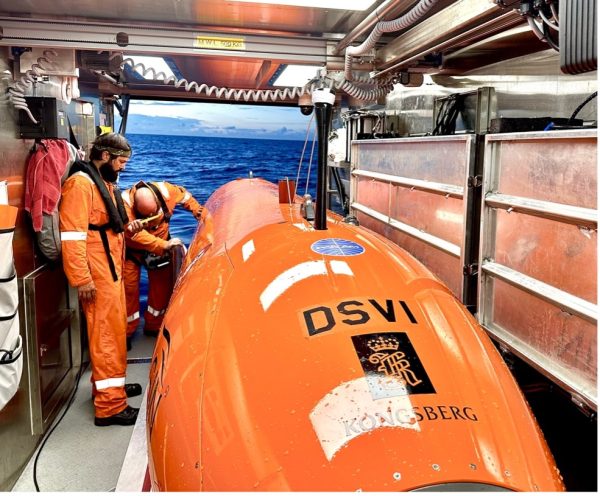“Amelia Earhart discovered her passion and pursued it with ambition and determination. When she said ‘because I want to’ in response to ‘why do you want to fly around the world?’ it stuck out to me. I incorporate her sense of adventure in everything I do and believe she serves as an inspiration for all.”
-Tony Romeo, CEO of Deep Sea Vision
The tale is known worldwide as the greatest aviation mystery in the history of the world. Amelia Earhart and Fred Noonan disappeared during their full-globe flight attempt on July 2, 1937, the first ever of its kind. They and their plane were never seen again. For 87 years, it seemed they had vanished without a trace.
The pair were nearing Howland Island, lying nearly 2,000 miles off the coast of Honolulu, Hawaii. Here, they were supposed to meet with the USCGC Itasca, a ship stationed to help them refuel. They entered airspace within 50 miles of the ship, when their radar and radio communications were abruptly cut off. It seemed as though the plane had vanished without a trace.
Recently, however, a discovery was made by ocean exploration company Deep Sea Vision in the waters of the Pacific Ocean, 100 miles off the coast of Howland Island.

The crew of the RV Offshore Surveyor had been at sea for 32 days, when they pinged something peculiar around 15,000 feet below the surface. Initially, they didn’t even realize they had captured anything significant. It wasn’t until Nov. 30, 2023, that they were inspecting the data and noticed a strange object on the sonar radar matching the exact dimensions of Earhart’s lost Lockheed Electra plane, and its general shape, albeit with a slightly crumpled left wing.
“You’d be hard-pressed to look at the data and say it is anything but a plane,” Tony Romeo, CEO of Deep Sea Vision, said in a statement. “We are very cognizant that sonar images can stretch and distort objects depending on their distance, but we feel very good about our target. We also have found no evidence of any aircraft that have been reported missing, or have disappeared in that area. So, yes, we believe this is very likely to be Earhart’s plane.”
The crew didn’t realize the significance of the photo until the final day of the mission on Nov. 30, as they were reviewing their captures from the expedition. The object was recorded around 16,000 feet below the surface, more than 3,500 feet further down than the wreck of the Titanic. The submersible used for the expedition is capable of reaching more than half the depth of the Mariana Trench.
“Our HUGIN 6000 is the latest commercial autonomous underwater

vehicle (AUV) and is capable of reaching 6,000 meters (19,000 feet) below the surface. It has a multitude of sensors that can detect underwater and below the seabed’s surface while also being able to take water quality samples,” Romeo said.
As of now, Deep Sea Vision plans to do much more research in the area, and is planning on working to confirm the object in question is the plane.
“The Deep Sea Vision team is currently planning their return to the site with a media crew and ROV to properly document their findings. While we do not have an exact return date, we plan to return this year to capture more close-up images of the site in order to match the serial numbers,” Romeo said. “Should it be a match, our first step is to check it to ensure the plane can be raised out of the water. We plan to put it in a warehouse or large area that could hold the plane and keep it in water.”
A much thorough inspection will take place later this year, using ROV drones to reach the ocean floor and survey the wreckage.
“Given the reported depth of the possible plane there could be a solid chance that there is good preservation. The Black Sea offers a good comparison of what is possible in terms of preservation when dealing with underwater archeology. In the Black Sea there is a unique zero oxygen environment that has preserved shipwrecks from the Ottomans, Byzantines, and even one site that dates back over 2000 years,” world history teacher April Fitzgibbon said. “We may not be able to expect the same level of preservation with the Earhart plane given that the site is located in the open ocean and this requires going to a much greater depth to have similar oxygen levels to the Black Sea which can add different problems of pressure, but I would not be surprised to see some very good remains.”
Raising the wreckage of the plane would be a long, costly, and risky process, however, not impossible.
“One of the biggest considerations would be the cost of excavating a site like this. Underwater archeology is much more expensive and labor intensive than digs done on land. Additionally, it’s not possible for people to use dive suits at this depth which significantly increases the expense as there are very few robots capable of doing this work and they have to be run by a qualified crew of archeologists and engineers who work from ship that also has to be fully staffed. Costs can easily surpass $100,000 per day,” Fitzgibbon said.
Unlike the wreck of the Titanic, which would essentially dissolve if brought to the surface, Earhart’s plane is preserved in saltier waters. Judging by the sonar scan, it seems to be in good condition as well as in one large piece. Deep Sea Vision plans to continue their efforts in recovering the plane, and will continue to search even if this is a dead end.
“This search has been and continues to be a great kickoff for our company. It is truly a testament to the quality of our team and our equipment. There has been a lot of shared time and effort, and I am extremely proud of each team member. We look forward to our future endeavors,” Romeo said.







